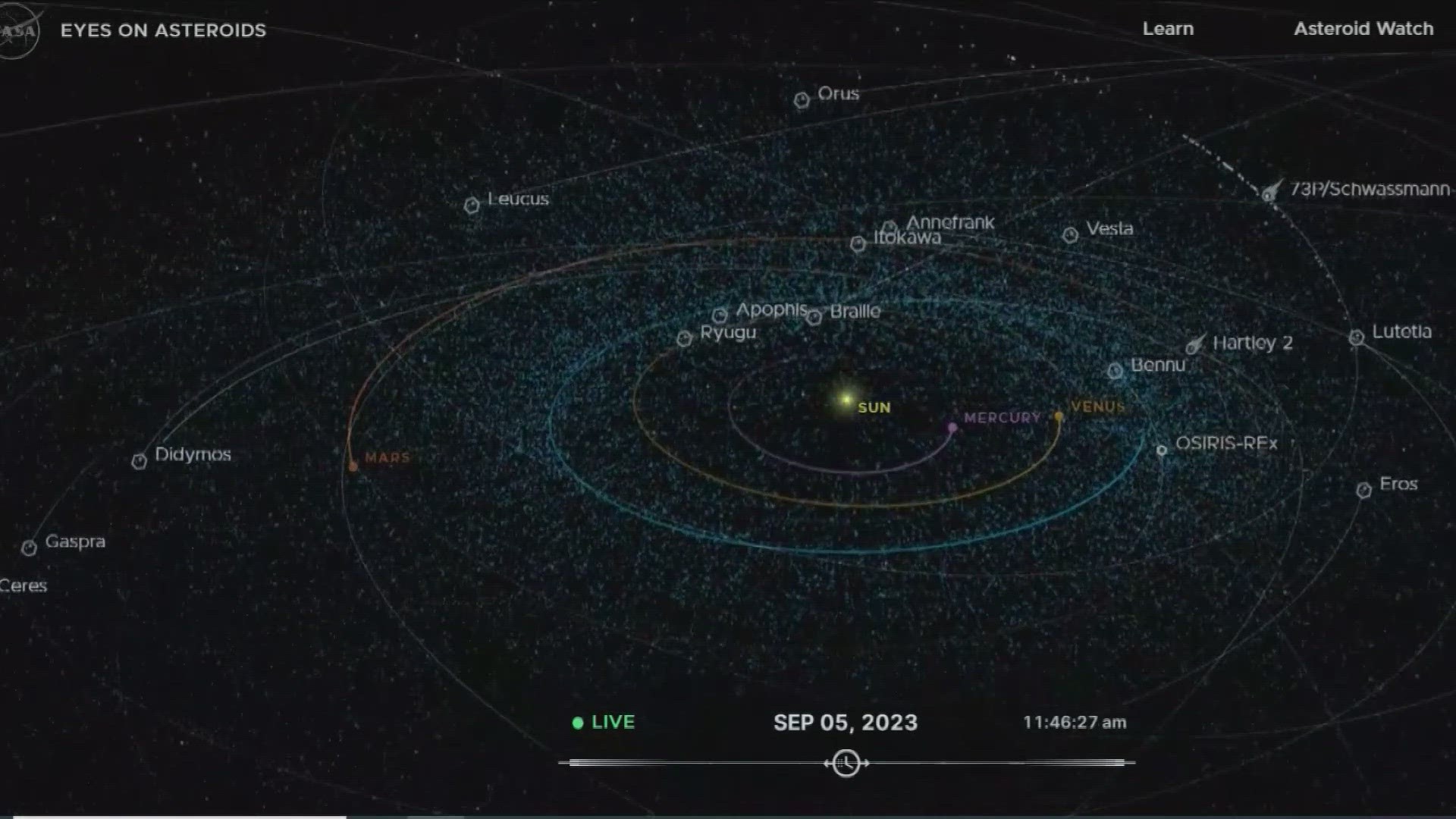SAN DIEGO — Five asteroids - including one as large as a house and two each the size of an airplane - will fly past Earth this week from Tuesday until the following Tuesday, according to NASA's Asteroid Watch Dashboard.
"Our group calculates the orbits of all of these asteroids for NASA and we predict when will asteroids will make close approaches to the Earth," said Paul Chodas the Director of the Center for Near Earth Object Studies in Pasadena who works for the NASA Jet Propulsion Laboratory.
He says the house-sized asteroid is called JA5. It will approach first on Tuesday within three million miles of Earth. It's 59 feet in size.
"The five asteroids are not going to collide with the Earth. They are going to pass by," he says.
Two asteroids will go past Earth on Friday. One is called QC5 and it's is compared to a plane since it's 79 feet in size. And the other is called GE and will be about the size of a bus - 26 feet in size.
"We want to be on the watch for larger asteroids that could head our way and we're keeping an eye on that since this could happen in the next hundreds years," said Chodas.
The airplane-sized asteroid will be within 2.5 million miles of Earth and the others will pass within 3.5 million miles of the Earth.
Another airplane-sized asteroid, QF6, 68 feet in size, will pass Earth on Sunday. This one will be the closest coming to the planet, traveling 1.6 million miles from Earth.
"It's pretty far away and we are not in any danger of it hitting the Earth. It's roughly four times the distance of the moon," said Chodas.
The final asteroid, will be the size of a bus and fly by on Tuesday, September 12th. It will be 25 feet in size and 2.6 million miles from Earth.
Again, he says none of these five asteroids are hitting the planet and the Earth isn’t facing any danger.
Chodas says on Friday the 13th in April 2029 to look out for an asteroid that will come close to Earth but not also hit Earth.
“It will come so close that it will be visible to the naked eye and bright enough to see which is really exciting," said Chodas.
Click here to see NASA's “Eye on Asteroids” web page where you can view comets and asteroids around the galaxy in real-time thanks to interactive visualization.
Watch Related: Rare green comet not seen for 50,000 years, visible in our skies tonight (Feb 1, 2023)

